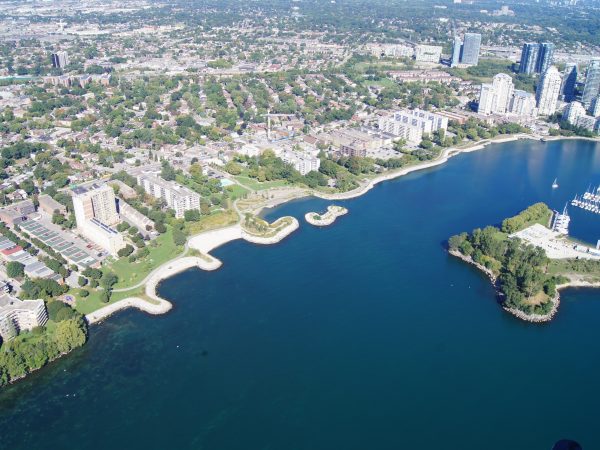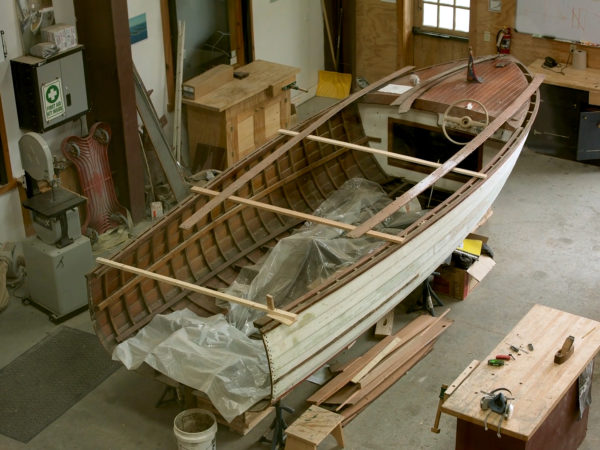
At the 2020 Cleveland Boat Show, just before the pandemic struck, big changes were already afoot in the industry.
“I brought a huge lawn into the Cleveland Boat Show in 2020 so that people could stand around and play cornhole and relax, people could sit around a picnic table and drink beer and kids could run around,” said Michelle Burke, president of the Lake Erie Marine Trades Association. “In fact, to me it’s all part of the experience people are having. Entertaining people, educating people, inspiring people and connecting with people.”
Boat shows, especially off-season indoor shows, Burke explained, are where boat dealers connect with customers both old and new – and it’s no longer just about sales. One boat dealer has a Grady White club. During the winter shows, owners show up to sit around and talk about how great Grady Whites are.
“The days of the boat shows where boats filled the entire exposition center and it was a huge sales event are over,” she said. “I mean, people can buy anything online now, but they’ll come to the boat show for an experience. And because boating is such a touch-and-feel industry, you want to see those boats, you want to put your hands on the steering wheel, you want to touch the electronics, and most of all you just want to be around the atmosphere, the summer fun yet to come.”
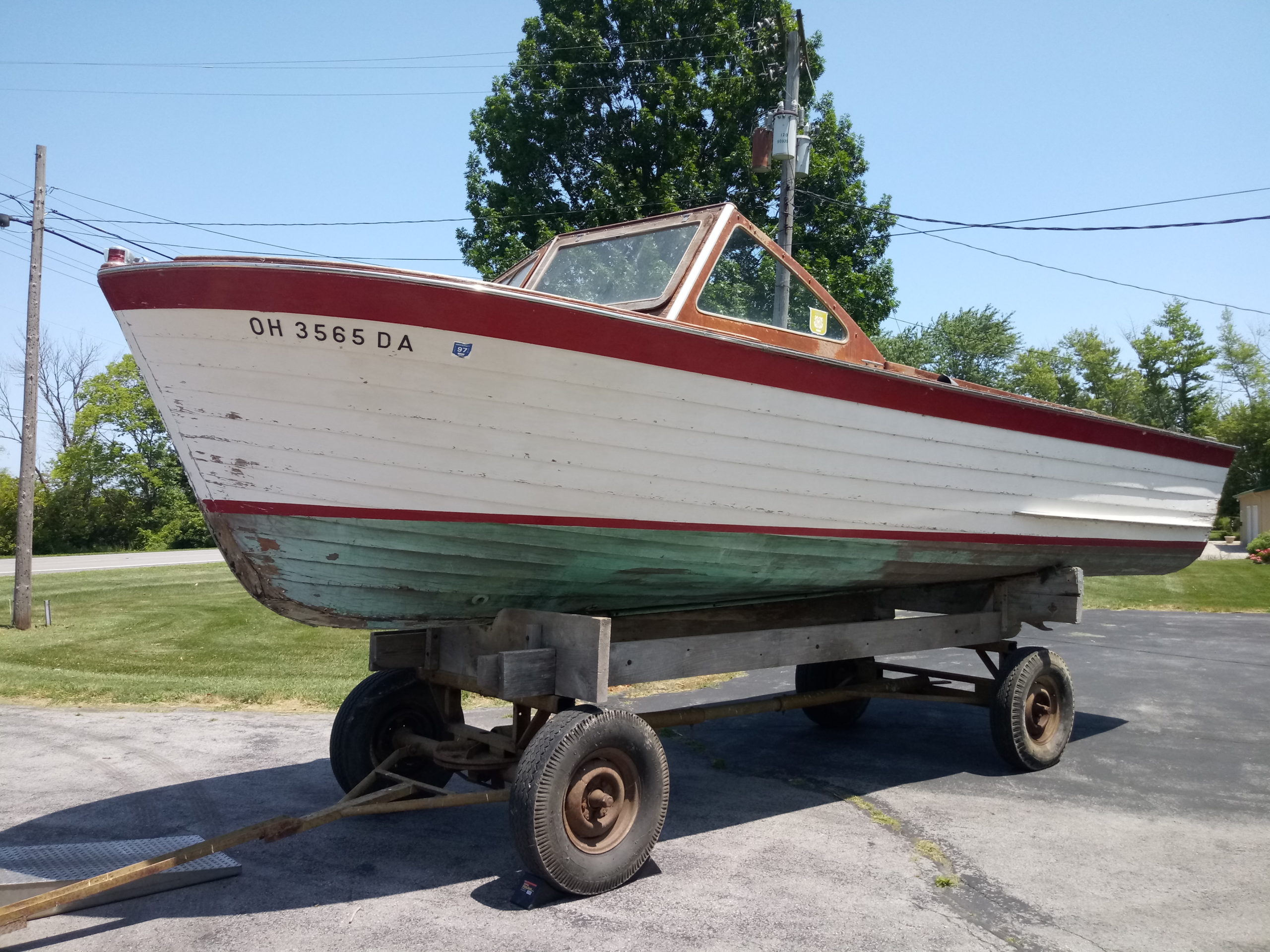
Chris Palmer plans on using this 1963 Lyman to help rebuild one he has just like it. (Photo Credit: James Proffitt)
COVID-19 boosted boat demand, restricted production
“With increased demand and supply chain challenges, manufacturers are definitely trying to keep up with demand,” said Nick Polan, executive director of the Michigan Boating Industries Association. “We think eventually we will, but consumers right now are used to getting in line.”
According to Polan, that’s one of the reasons boat shows are evolving. The lack of inventory has left some shows with extra space and some dealers, who may not be in possession of large inventories, questioning whether they should even display at shows.
“When we talk to our dealers today, they definitely know they will not have as many boats available in January. We’re estimating our boats will be 40% less overall,” Polan said. “It’s different dealer to dealer, but overall we know the shows are going to be smaller right now.”
And with less boats and more space available, it’s natural for shows to move toward new avenues for attendees, she said.
“It’s a family destination in the middle of winter,” Polan said of the indoor shows like MBIA’s Detroit and Novi shows. “Some people just like hooking up with their boating friends and make a day of it seeing what’s new and socializing. We have a huge tiki bar and actually had to build a second bar.”
Others are there to actually buy boats, she said. Another important component of these shows are the non-boat owners there to learn about boats, the prospective future buyers.
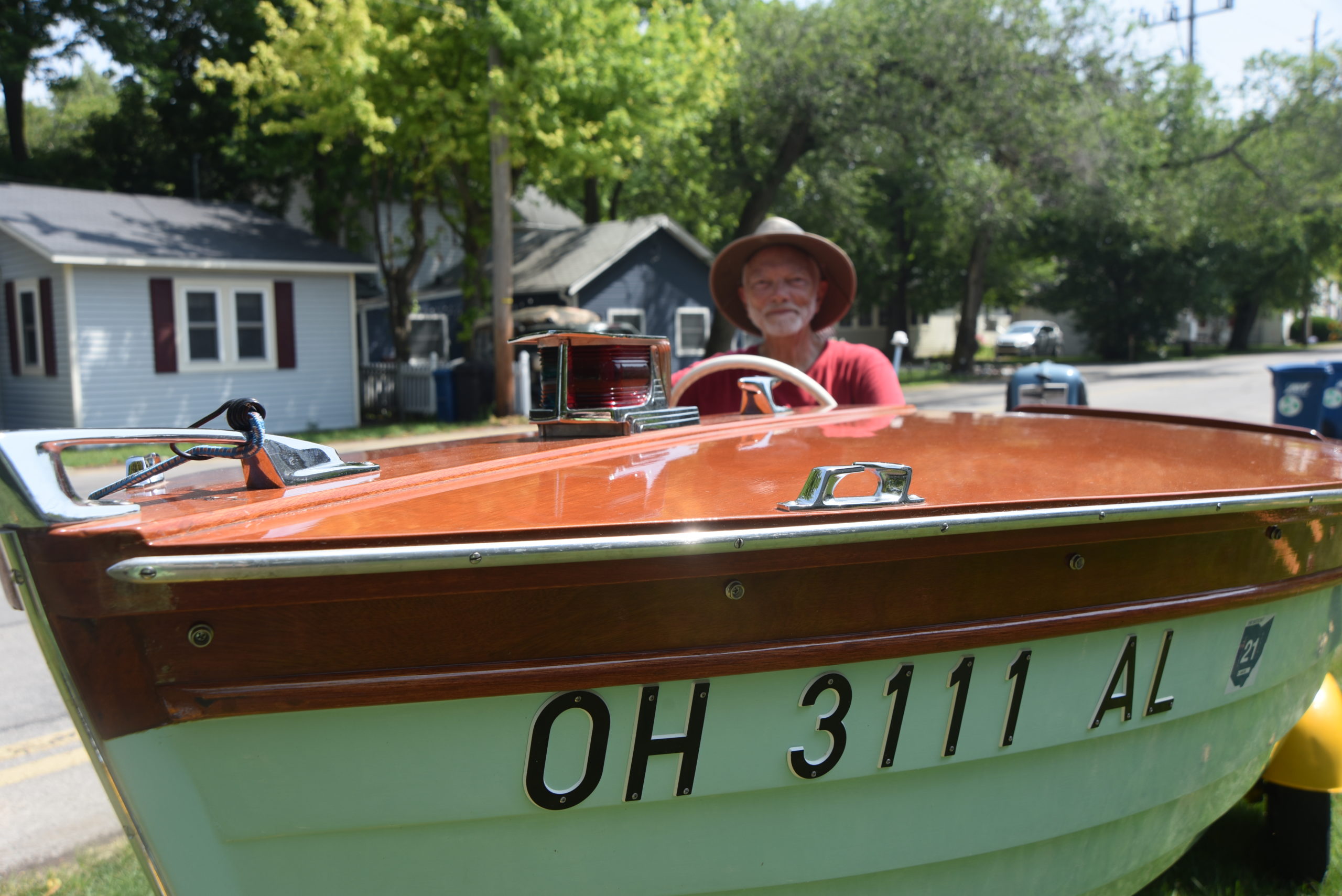
Dwight King is all smiles sitting in his old Thompson. (Photo Credit: James Proffitt)
Wooden boat shows about history, sentiment
Some boat shows aren’t about buying and selling the latest, though deals could happen.
Barb Smith is co-chair of the Les Cheneaux Antique and Wooden Boat Show held in Hessel, Michigan, where people come to marvel at and reminisce about boats and their storied pasts.
“We have a sunny day and lots of people. We probably have 7-8,000 people here and almost a record number of boats here, 170 registered this morning,” she said about the 2021 show held in August. “There’s one, Lance Wilson, he trailered the boat up from Alabama. About a third of the boats come from the Les Cheneaux islands.”
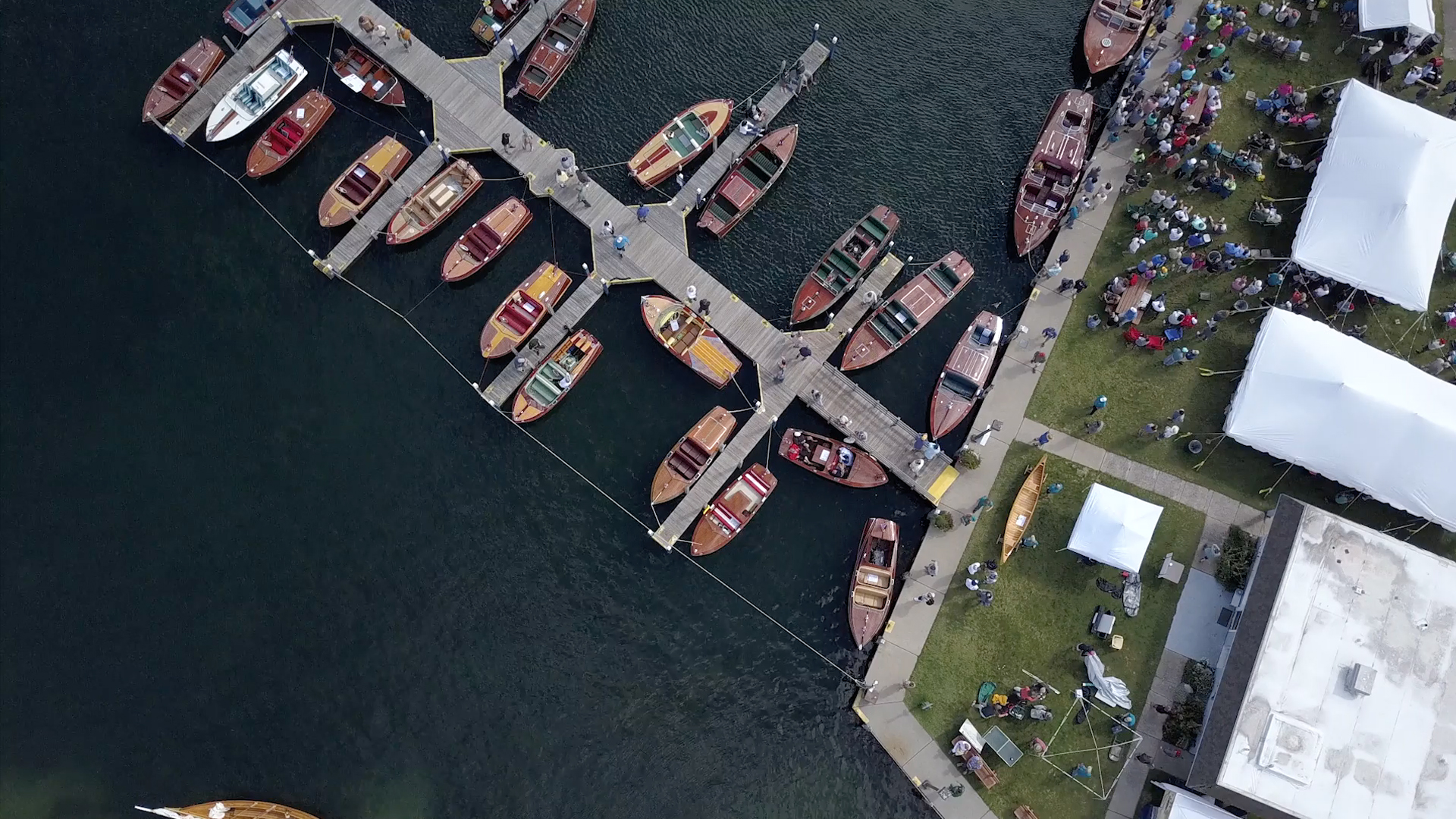
The 2021 Les Cheneaux Antique and Wooden Boat Show in Hessel, Michigan is a big event in the Les Cheneaux region. (Great Lakes Now Episode 1029)
Smith said because of a long boat-building history beginning in the 1920s around the Les Cheneaux islands and the large number of boats still around, volunteers established the show 43 years ago.
“There are 36 islands that are very well protected and accommodate these beautiful wooden boats,” she said.
John Allen showed up with Bunky, a 1929 33-foot Belle Isle built in the company’s boat yard on the Detroit River.
“Of the 30 boats I own, it’s my favorite because I named it after my father,” Allen said. “His nickname was Bunky in 1929. Today actually, Aug. 14, 1929, my father was born, and his uncle came into the room and said to my grandmother, ‘He’s got bigger ears than Bunky,’ who was a cartoon character in the 1920s. And everybody called my father Bunky for the rest of his life. The boat is a big handsome boat and my father was a big handsome guy, and so I called it Bunky.”
Another of Allen’s boats, Miss Algonac, is the oldest surviving Chris Craft in the world.
“Invariably, antique boats like this invoke a memory, a place in time in your past a favorite moment with your grandfather or your mom and dad or a girlfriend on a first date or learning to ski, any of those multitude of reasons,” he said. “These boats are history firing off on four and six and eight and 12 cylinders, and they represent so many memories to so many people across the board.”
API key not valid. Please pass a valid API key.
Not everyone in industry enamored with experiential trend
Michigan-based Lance Valentine has been in the industry for decades, both as a boat salesman and as a tackle and fishing gear guy. He’s not a fan of the changing face of shows.
“The old days, 10, 12, 15 years ago, it was an event where you’d go with actually a purpose of comparing multiple boats you were interested in,” he said. “You’d narrow it down at another show, and you’d buy a boat, and there was a reason to buy a boat there – extra equipment, save money by getting a great deal, maybe a free cover or spare tire, that type of stuff. That’s the way it used to be.”
According to industry officials, the cost of a single 10×10 booth at a show can run upwards of $1,000. Bulk space, like boat dealers buy, can run almost $5,000 for a 20×40 section.
Valentine said because of that he’d like to see less “tourists” and more buyers.
“Now it’s much more ‘Bring the kids for the rock climbing wall, and bring the kids for the cotton candy, and oh hey, there’s my fudge guy! And let’s find the guy selling the Australian hats, and let me put my kid on a $100,000 boat so they can walk around and push the buttons,’” he said. “It’s frustrating because there are so many people there who have no intention of buying.”
Valentine, who currently runs a walleye fishing education program and offers the Lance Valentine Signature Series tackle line said his goals don’t necessarily align with those of boat show operators.
“It’s always a balancing act between the people that put the shows on, they make money by how many people come through the gate, and the vendors who make money when they sell stuff,” he said. “So I don’t care if 10,000 people come through if there’s only 1,000 buyers. I’d rather have 1,000 qualified buyers I can spend more time with and actually sell more product to. I feel like I have to approach everyone and say hi and give everyone a little bit of time and that person has no intention of buying a boat, buying anything. But how do you discern?”
Wisconsin-based Kristin Monroe sells PolarKraft and Angler Quest fishing boats and previously managed the Wisconsin Fishing Expo in Madison.
For the fishing expo, she said, the focus is on fishing only: no Chamois, no slicers-choppers-dicers, no vendors with random, non-fishing merchandise. It’s all about sales, deals and show discounts.
“But the boat show industry is definitely leaning toward that family experience,” she said. “I think some shows are trying to get attendance numbers, and it’s a vicious circle because they get the numbers they think vendors want but the vendors don’t care about the numbers, they want sales. They want quality numbers.”
But the pandemic may have changed the makeup of those numbers, Monroe said, citing a surge in families that are now interested in fishing or boating that were previously not.
“So is that really a bad thing right now? I think it’s different now, there’s a cultural shift because activities are changing,” she said.
Monroe cited her own family, where children were heavily involved in team sports. COVID-19 shut that down, she said, and her kids spent exponentially more time in outdoor activities.
“Sure, I think a huge number of the people at boat shows are tire-kickers and they just can’t do it right now. You just never know who may buy, so I talk to everyone at shows,” she said.
She uses social media to help boost sales. Monroe said she runs an Angler Quest social media group and recruits new members at shows.
“It’s a closed group because I’m going to do stuff to keep them engaged, because it’s not just any group, I want real potential buyers. It is the best sales tool in the world because everyone in there is an Angler Quest owner. If I have someone on the cusp of buying a boat, I tell them try joining the group,” she said. “They post questions, and I have a real Angler Quest owner who will answer their questions and share content.”
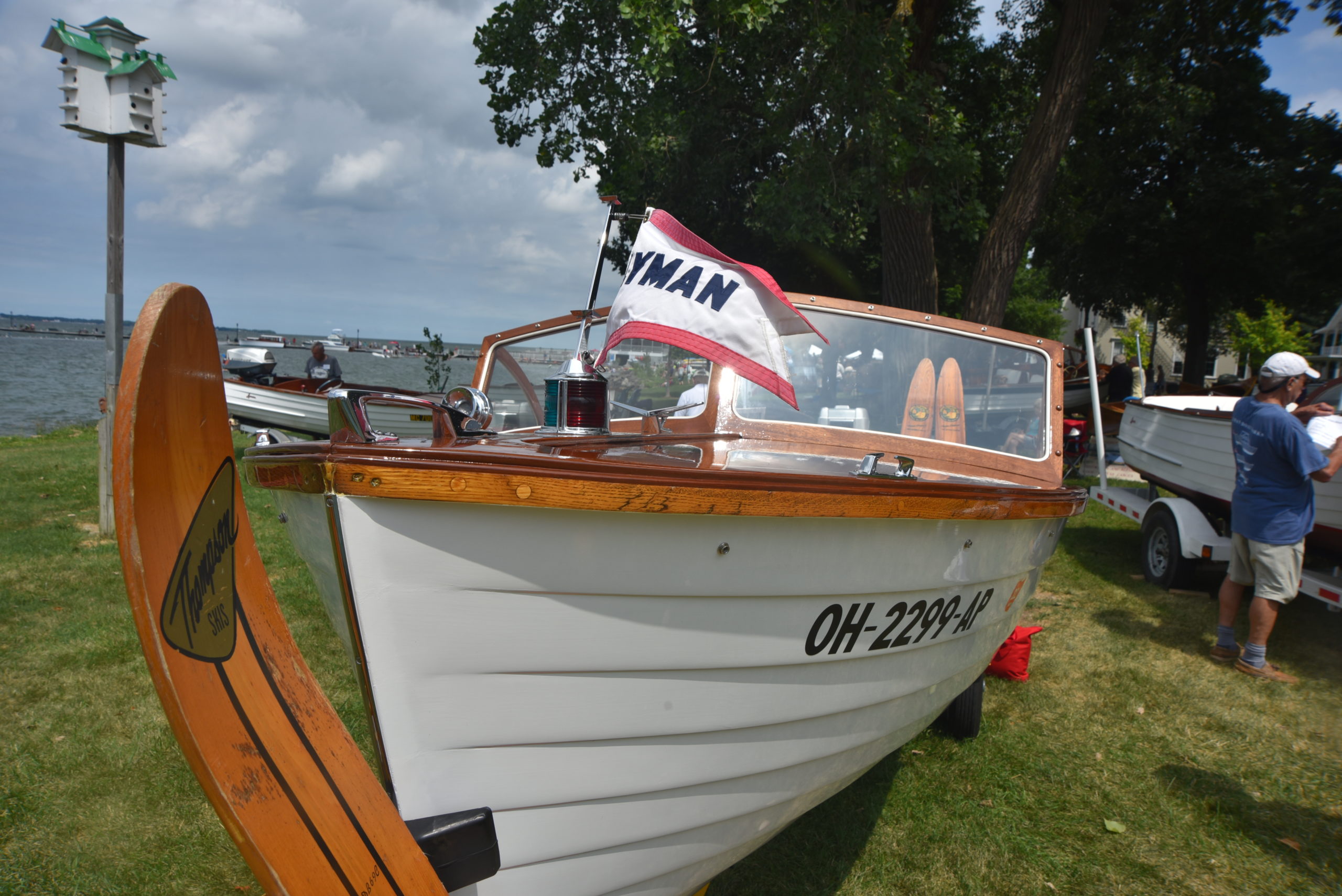
The Lewis’ Lyman (Photo Credit: James Proffitt)
Mostly tire kickers and gawkers, few sales
David Giles sells boats for Colony Marine, based in St. Clair Shores, Michigan. At the Progressive Metro Boat Show at Lake St. Clair Metropark, he spent a few days showing a used 47-foot 2020 Prestige. And plenty of people kicked their shoes off, sat their food or beverage down, and boarded the $869,000 boat.
“When all’s said and done, we probably had 300 people board a day,” he said. “If you take those 1,200 people, there’d be three to five people buying.”
Giles said most of the deals happen after the show.
“Like the people that just left, they’ll be meeting me Monday for a sea trial and then by the end of the week it’ll be wrapped up,” he said. “And then there are some other times people will give us a deposit right here.”
Giles said he prefers in-the-water shows over indoor shows.
“It’s the most natural environment for the boat, and we’re in business to have fun and it’s always a lot more fun outside than inside,” he said. “I am right about that, I know it.”
According to Giles, children and other non-buyers are more than welcome to board and enjoy his boats.
“We just let them know it’s a million-dollar playground, so no jumping on the beds. We’re good to the kids, we just let their parents know they gotta keep an eye on them,” he said. “And we always offer to hold dogs for people while they board. We love dogs, just not on a teak swim platform.”
For the customers for whom $1 million is out of the question, they can get on the water with a new dinghy and motor for a fraction of the Prestige price, at about $5,000.
Dave Klicki, with local dealer Blue Lagoon Boating Center, sells two brands of rubber dinghies.
“We do the Detroit show and some small local shows,” he said. “I prefer the indoor shows because my brochures aren’t blowing all over the place, and if you get rain, you don’t end up having to clean everything up.”
Klicki said most people buying dinghies are getting them to complement much larger boats. And he gets plenty of window shoppers and rambunctious kids.
“Kids like them, and that’s just part of the boat show business,” he said.
Catch more news on Great Lakes Now:
Legacy Boats on Lake Erie: Wooden boats once ruled the waters of the Great Lakes
Great Lakes Breakdowns: There’s a thin line between affordable and not for boat tows
Boating on a Budget: Get off land and onto the Great Lakes
API key not valid. Please pass a valid API key.Featured image: At the Lakeside Wooden Boat Show, staring is not considered rude. (Photo Credit: James Proffitt)



